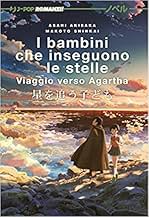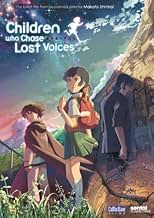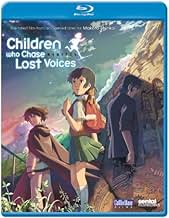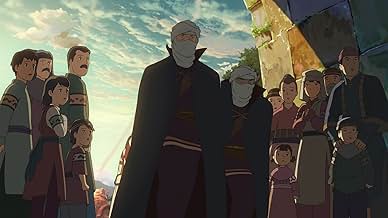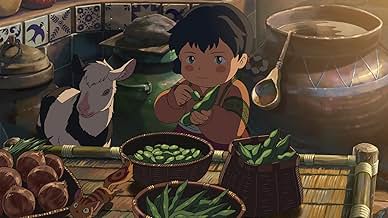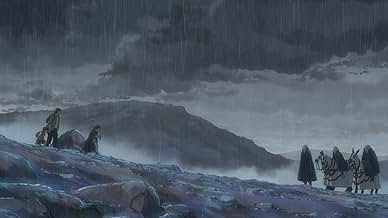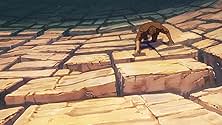A coming of age story involving young love and a mysterious music, coming from a crystal radio left as a memento by an absent father, that leads a young heroine deep into a hidden world.A coming of age story involving young love and a mysterious music, coming from a crystal radio left as a memento by an absent father, that leads a young heroine deep into a hidden world.A coming of age story involving young love and a mysterious music, coming from a crystal radio left as a memento by an absent father, that leads a young heroine deep into a hidden world.
- Awards
- 1 win & 7 nominations total
Hisako Kanemoto
- Asuna Watase
- (voice)
Miyu Irino
- Shin
- (voice)
- …
Kazuhiko Inoue
- Ryûji Morisaki
- (voice)
Junko Takeuchi
- Mimi
- (voice)
Fumiko Orikasa
- Asuna no haha
- (voice)
Sumi Shimamoto
- Risa Morisaki
- (voice)
Tamio Ôki
- Amorôto no rôjin
- (voice)
Aki Kanada
- Seito
- (voice)
- (as Aki Kaneda)
Ai Horanai
- Seito
- (voice)
Saya Horigome
- Seito
- (voice)
Mayumi Tsuchiya
- Seito
- (voice)
Mao Kobayashi
- Seito
- (voice)
- (as Satomi Saitô)
Naomi Matamura
- Murabito
- (voice)
Mariko Nagahama
- Murabito
- (voice)
Mika Ishibashi
- Murabito
- (voice)
Hiroko Midorikawa
- Murabito
- (voice)
Yûtarô Honjô
- Murabito
- (voice)
Hiroshi Shimozaki
- Murabito
- (voice)
Featured reviews
This is a nice little movie notable primarily for its visual beauty. The story is loosely constructed but engaging, the mythical creatures are imaginative, and the whole thing is, while not especially memorable, generally enjoyable.
On the other hand, I felt the movie kept implying things and then just dropping them. A mysterious boy's statements to the girl seem fraught with meaning, suggesting some back story that is then never revealed. A strange crystal also must have some sort of history, but what? It's as the movie has unplumbed depths.
This may be the reason that at the end I didn't have the feeling of satisfaction I experience at the end of other movies (like the films of Miyamota). There is something absent from this one. But it's still a nice movie.
On the other hand, I felt the movie kept implying things and then just dropping them. A mysterious boy's statements to the girl seem fraught with meaning, suggesting some back story that is then never revealed. A strange crystal also must have some sort of history, but what? It's as the movie has unplumbed depths.
This may be the reason that at the end I didn't have the feeling of satisfaction I experience at the end of other movies (like the films of Miyamota). There is something absent from this one. But it's still a nice movie.
This film was a pleasant surprise to find and watch. The story is compelling, the Japanese voice acting is excellent, and the level of imagination is fantastic.
I was struck by the sheer attention to detail in this film: gradual changes in daylight within individual scenes, subtle dirt and weathering, precise animation of water effects, accurate animation of wildlife, and excellent use of light and color. These little extras did not go unnoticed. All of this helps to create a richer visual experience.
The characters were interesting and quite nuanced and the musical score suits the film well.
Now here's what really surprised me.... This is the director's first full-length feature and first time working with the larger-scale studio system. Couple this with the fact that he's a young director and you have someone with a very strong career ahead of him.
The style of this film is similar to that of Miyazaki, and this is intentional. Miyazaki's style was chosen because it is recognized worldwide and it has proved itself effective for dramatic story-telling. Watching the behind-the-scenes information for this film was fascinating and it was amazing to see how young the crew were. Certainly there is a great deal of talent in Japan today -- talent willing to make 'classic' high-production-value anime. And for that I'm grateful. The next generation is sure to enjoy animation of the level that I enjoyed in my youth.
In summary, I like this film a lot and I highly recommend it. If I were to nitpick this movie, I'd say that a few scenes were cut short a tiny bit too soon. I recommend the director watch the director's commentary for Star Wars: The Empire Strikes Back. In there is a discussion about holding the camera at the end of a scene and why it's important for dramatic shots. I should also mention that although this is an animated film, there are scenes of violence and some sequences that children may find frightening.
So if you're a fan of Miyazaki's work or simply a fan of imaginative drama and fantasy films, be sure to check this one out.
I was struck by the sheer attention to detail in this film: gradual changes in daylight within individual scenes, subtle dirt and weathering, precise animation of water effects, accurate animation of wildlife, and excellent use of light and color. These little extras did not go unnoticed. All of this helps to create a richer visual experience.
The characters were interesting and quite nuanced and the musical score suits the film well.
Now here's what really surprised me.... This is the director's first full-length feature and first time working with the larger-scale studio system. Couple this with the fact that he's a young director and you have someone with a very strong career ahead of him.
The style of this film is similar to that of Miyazaki, and this is intentional. Miyazaki's style was chosen because it is recognized worldwide and it has proved itself effective for dramatic story-telling. Watching the behind-the-scenes information for this film was fascinating and it was amazing to see how young the crew were. Certainly there is a great deal of talent in Japan today -- talent willing to make 'classic' high-production-value anime. And for that I'm grateful. The next generation is sure to enjoy animation of the level that I enjoyed in my youth.
In summary, I like this film a lot and I highly recommend it. If I were to nitpick this movie, I'd say that a few scenes were cut short a tiny bit too soon. I recommend the director watch the director's commentary for Star Wars: The Empire Strikes Back. In there is a discussion about holding the camera at the end of a scene and why it's important for dramatic shots. I should also mention that although this is an animated film, there are scenes of violence and some sequences that children may find frightening.
So if you're a fan of Miyazaki's work or simply a fan of imaginative drama and fantasy films, be sure to check this one out.
According to Japanese anime director Makoto Shinkai, his latest film Children who Chase Lost Voices from Deep Below is a study of "how people are connected" and the relationship between individuals. Although the film is designed primarily for a young audience, adult themes of love and loss abound in its story of mourning lovers attempting to reach out to them across the dimensions. Its theme can also be said to encompass the Four Noble Truths of Buddhism: Life is full of suffering, suffering is caused by attachment, release from suffering is attainable, and there is a path to the end of suffering. Here, the path is setting your loved one free and "saying hello" to a world without them.
Nominated for best animated feature at the Asian Pacific Screen Awards in 2011, the film takes us on a journey to a land deep below the surface of the Earth, the legendary country called Agartha where it is rumored the dead can be brought back to life. Unlike other visionary depictions of mythical kingdoms, Agartha has no magical cities of gold with tall towers and futuristic technology, but rather a rural environment of towns and villages in which mundane life appears similar to those who are called the "topsiders", those who live on the surface (us).
Supported by the ethereal soundtrack of Tenmon http://www.youtube.com/watch?v=NpRFbY189bo, the plot centers around the quest of a young girl of around 11 or 12 named Asuna Watase (Hisako Kanamoto) to find the mythical Agartha, talked about by her substitute teacher, Ryugi Morisaki (Kazuhiko Inoue). Mirroring the Greek legend of Orpheus and Eurydice and its Japanese equivalent, the myth of Izanagi and Izanami, Morisaki longs to travel to Agartha to find his deceased wife Lisa and bring her back with him to Earth. Asuna has also lost a loved one. Her father died when she was little, compelling her mother to work long hours as a nurse. Lonely and withdrawn, she spends her time after school in her private mountain retreat listening to the crystal radio her father had given her.
One day, after hearing beautiful and strange music from her radio, she meets a young boy with supernatural powers named Shun (Miyu Irino), who saves her from the attack of a ferocious bear-like creature. Returning the next day, Shun tells her that he is from Agartha, a land deep inside the core of the hollow Earth. Surprised by a blessing from Shun in the form of a kiss on the forehead, Asuna leaves suddenly but when she comes back the following day, she learns sadly that Shun, while trying to reach for the stars, has fallen off a ledge and died.
Telling her story to Mr. Morisaki, the teacher informs her that in the ancient times, humans were guided by creatures known as "Quetzalcoatls," a name we know from Mesoamerican history as the Aztec God called the "Feathered Serpent" who, according to legend, promised to return one day to lead his people. When Asuna once again returns to her hiding place, she discovers a boy who looks like Shun but who claims to be his brother Shin (Irino). Morisaki poses as a warrior of the group called the Arch Angels, those who want to reach Agartha but are interested only in its wealth and superior knowledge. Morisaki, however, simply wants to find his dead wife Lisa.
Using a device known as a "clavis," he and Asuna enter the underground realms and begin their travel to the Gate of Life and Death, "the undiscovered country from whose bourn no traveler returns." The journey through the subterranean realms is filled with both beauty and the obligatory horror, the norm for sci-fi adventure stories for children. Asuna and Morisaki are attacked by fearful long-toothed monsters (children must have their nightmares), and have to rely on the powers of Shin to save them, even though he had been given the task of retrieving the "clavis" which they possess.
The remainder of the film is filled with numerous plot twists and turns that introduce other characters and some of it can be confusing. The viewer is treated, however, to ravishing visuals that invoke the experience of dimensions far beyond our limited reality. Ultimately, Morisaki and Asuna are forced to choose whether or not they wish to pursue their goal in Agartha or let go and surrender to the wisdom of the universe, and the theme song of the film by Anri Kumaki, "Hello, Goodbye and Hello," http://www.youtube.com/watch?v=UgWb2YSTovA exquisitely embraces the conflicting emotions the characters feel.
Whether or not you have recently lost a loved one, you may find the tears hard to resist. Lost Voices is the first of Shinkai's films that I have seen and it definitely encourages me to see more. Comparisons of Shinkai's themes and style have been made with those of Hayao Miyazaki, but since I have only seen one of Miyazaki's films, I will leave the comparisons to others and just enjoy the warm glow of Shinkai's stunning achievement.
Nominated for best animated feature at the Asian Pacific Screen Awards in 2011, the film takes us on a journey to a land deep below the surface of the Earth, the legendary country called Agartha where it is rumored the dead can be brought back to life. Unlike other visionary depictions of mythical kingdoms, Agartha has no magical cities of gold with tall towers and futuristic technology, but rather a rural environment of towns and villages in which mundane life appears similar to those who are called the "topsiders", those who live on the surface (us).
Supported by the ethereal soundtrack of Tenmon http://www.youtube.com/watch?v=NpRFbY189bo, the plot centers around the quest of a young girl of around 11 or 12 named Asuna Watase (Hisako Kanamoto) to find the mythical Agartha, talked about by her substitute teacher, Ryugi Morisaki (Kazuhiko Inoue). Mirroring the Greek legend of Orpheus and Eurydice and its Japanese equivalent, the myth of Izanagi and Izanami, Morisaki longs to travel to Agartha to find his deceased wife Lisa and bring her back with him to Earth. Asuna has also lost a loved one. Her father died when she was little, compelling her mother to work long hours as a nurse. Lonely and withdrawn, she spends her time after school in her private mountain retreat listening to the crystal radio her father had given her.
One day, after hearing beautiful and strange music from her radio, she meets a young boy with supernatural powers named Shun (Miyu Irino), who saves her from the attack of a ferocious bear-like creature. Returning the next day, Shun tells her that he is from Agartha, a land deep inside the core of the hollow Earth. Surprised by a blessing from Shun in the form of a kiss on the forehead, Asuna leaves suddenly but when she comes back the following day, she learns sadly that Shun, while trying to reach for the stars, has fallen off a ledge and died.
Telling her story to Mr. Morisaki, the teacher informs her that in the ancient times, humans were guided by creatures known as "Quetzalcoatls," a name we know from Mesoamerican history as the Aztec God called the "Feathered Serpent" who, according to legend, promised to return one day to lead his people. When Asuna once again returns to her hiding place, she discovers a boy who looks like Shun but who claims to be his brother Shin (Irino). Morisaki poses as a warrior of the group called the Arch Angels, those who want to reach Agartha but are interested only in its wealth and superior knowledge. Morisaki, however, simply wants to find his dead wife Lisa.
Using a device known as a "clavis," he and Asuna enter the underground realms and begin their travel to the Gate of Life and Death, "the undiscovered country from whose bourn no traveler returns." The journey through the subterranean realms is filled with both beauty and the obligatory horror, the norm for sci-fi adventure stories for children. Asuna and Morisaki are attacked by fearful long-toothed monsters (children must have their nightmares), and have to rely on the powers of Shin to save them, even though he had been given the task of retrieving the "clavis" which they possess.
The remainder of the film is filled with numerous plot twists and turns that introduce other characters and some of it can be confusing. The viewer is treated, however, to ravishing visuals that invoke the experience of dimensions far beyond our limited reality. Ultimately, Morisaki and Asuna are forced to choose whether or not they wish to pursue their goal in Agartha or let go and surrender to the wisdom of the universe, and the theme song of the film by Anri Kumaki, "Hello, Goodbye and Hello," http://www.youtube.com/watch?v=UgWb2YSTovA exquisitely embraces the conflicting emotions the characters feel.
Whether or not you have recently lost a loved one, you may find the tears hard to resist. Lost Voices is the first of Shinkai's films that I have seen and it definitely encourages me to see more. Comparisons of Shinkai's themes and style have been made with those of Hayao Miyazaki, but since I have only seen one of Miyazaki's films, I will leave the comparisons to others and just enjoy the warm glow of Shinkai's stunning achievement.
"Your Name" ended up being one of my favorite movies of last year, and one of my favorite anime of all time, so I went into this film with relatively high expectations, and as a result, I was slightly disappointed. Don't get me wrong; this movie has a lot of things going for it. I loved the melancholic, almost lazy piano music that plays for the majority of the film- it creates a magical atmosphere that works wonders with the animation style and overall arc of the story. The way that characters and creatures are designed is memorable, and sometimes it's even a little bit frightening and bizarre, but that totally worked for me. The landscapes are beautiful and sometimes strange (though we never quite reach the level of artistic mastery that came with "Your Name"). There were some parts where I really felt for the characters, and then there were other times when I was quite bored.
Every culture has a story about the Underworld, where the souls of the dead reside and where, sometimes, the living can find their way in hopes of bringing a loved one back to life. In "Children Who Chase Lost Voices from Deep Below," Agartha is the name of that Underworld, and when young Asuna (voiced by Hisako Kanemoto) finds herself interacting with a boy from Agartha, Shun (voiced by Miyu Irino), her whole world is changed. Shun saves her from a frightening creature, but then he himself is killed. In the meantime, the substitute teacher taking over for the regular teacher of Asuna's class, Mr. Morisaki (voiced by Kazuhiko Inoue), is all-too-familiar with stories from and about Agartha, and he is determined to get there in order to bring his wife, dead 10 years, back to the world of the living. But the balance of all the worlds depends on such things not happening, and there are many forces arrayed against Mr. Morisaki and young Asuna who has willingly joined him in his quest, for she hopes to find a living Shun. Instead she finds Shun's younger brother, Shin (also voiced by Miyu Irino), whose loyalties and desires are not perhaps favourable to Asuna....
Anime is Japan's version of "cartoons," although they tend to be much more complex and beautiful than Hanna-Barbera ever thought of, and this is one very beautiful piece of work. The images are exquisite and the colours are wonderful, the underworld of Agartha is just as real as the everyday world Asuna initially inhabits. And the storyline, essentially a meditation on letting go of the past while still being free to mourn lost loved ones, is much more resonant for adults than for kids. The writer and director, Makoto Shinkai, has been compared with the great anime master, Hayao Miyazaki, and while those are mighty shoes indeed to fill, Shinkai's work has the same kind of gentleness and beauty; he is surely a talent to watch for in the coming years. A beautiful film, and well worth seeking out.
Anime is Japan's version of "cartoons," although they tend to be much more complex and beautiful than Hanna-Barbera ever thought of, and this is one very beautiful piece of work. The images are exquisite and the colours are wonderful, the underworld of Agartha is just as real as the everyday world Asuna initially inhabits. And the storyline, essentially a meditation on letting go of the past while still being free to mourn lost loved ones, is much more resonant for adults than for kids. The writer and director, Makoto Shinkai, has been compared with the great anime master, Hayao Miyazaki, and while those are mighty shoes indeed to fill, Shinkai's work has the same kind of gentleness and beauty; he is surely a talent to watch for in the coming years. A beautiful film, and well worth seeking out.
Did you know
- TriviaBefore the film's release in May 2011, manga adaptations were set to begin serialization in April 2011
- SoundtracksHello Goodbye & Hello
Lyrics & Music by Anri Kumaki
Arranged by Shun'ya Shimizu
Performed by Anri Kumaki
- How long is Children Who Chase Lost Voices?Powered by Alexa
Details
- Release date
- Country of origin
- Official site
- Languages
- Also known as
- Children Who Chase Lost Voices
- Production companies
- See more company credits at IMDbPro
Box office
- Gross worldwide
- $645,560
- Runtime1 hour 56 minutes
- Color
- Sound mix
- Aspect ratio
- 1.85 : 1
Contribute to this page
Suggest an edit or add missing content


